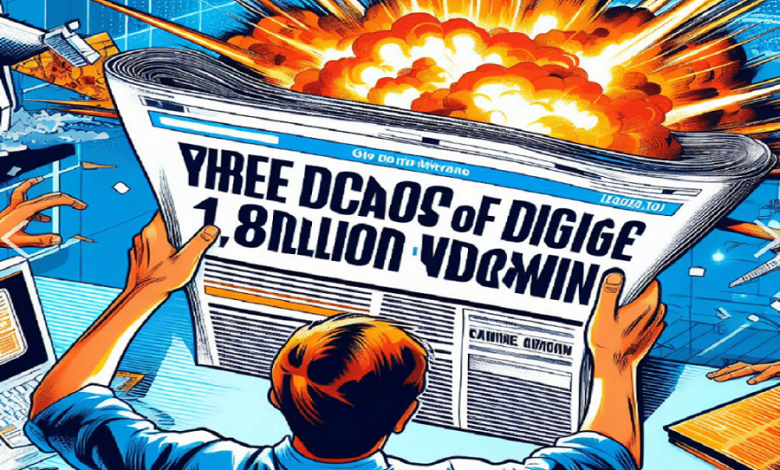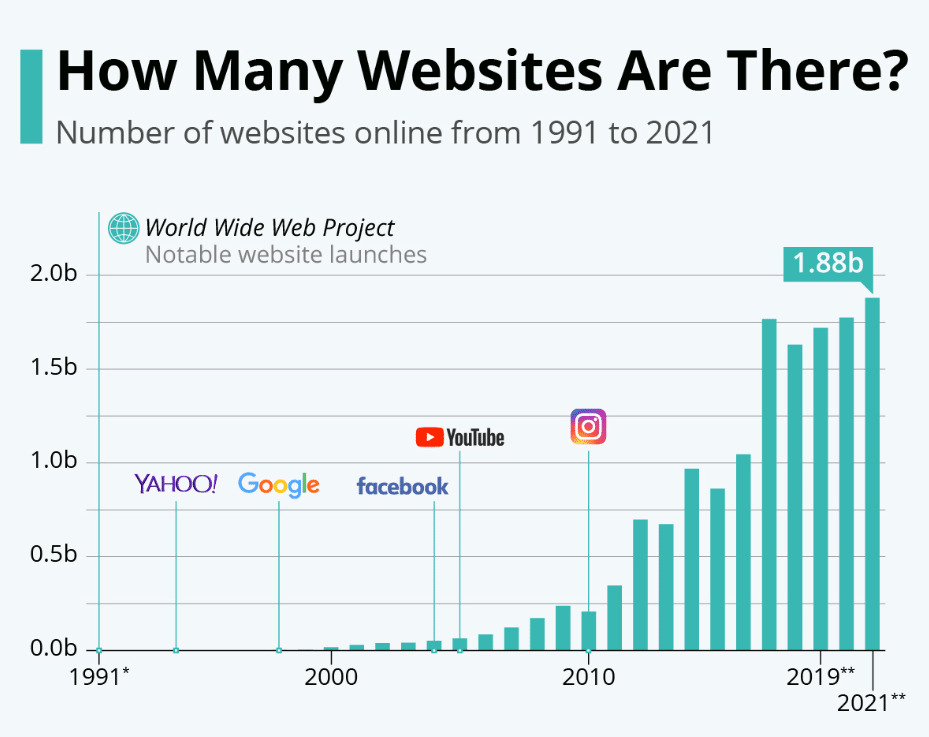Three Decades of Digital Explosion: Internet Soars to 1.88 Billion Websites and Counting

Over the past three decades, the digital landscape has experienced a profound evolution. The website surge stands as a testament to the internet’s unstoppable growth. As reported by TradingPlatforms.com, the World Wide Web now hosts an astonishing 1.88 billion websites and continues to grow. This unprecedented expansion has fundamentally reshaped our methods of communication, transformed business practices, and revolutionized how we access information.
Speaking on the data, Edith Reads from TradingPlatforms.com said. “From its humble beginnings as a government research project, the Internet has transformed how we live and interact. As we look to the future, the concept of Web 3.0 promises a more decentralized, secure, and user-centric internet experience. This will reshape the very foundation of the online world.”
Internet’s Humble Beginnings
The Internet’s journey began in the late 1960s with the creation of ARPANET. ARPANET was a research project funded by the United States Department of Defense. The goal was to develop a communication network to withstand a nuclear attack. However, it evolved into something far more transformative. The program laid the foundation for the modern Internet by introducing packet-switching technology.
The first-ever website, “info.cern.ch,” was created by Tim Berners-Lee in 1991 at CERN, the European Organization for Nuclear Research. It was a basic HTML page with information about the World Wide Web project. This milestone marked the birth of the Internet as we know it today.
Over the past three decades, the Internet’s growth has been exponential. By 1993, there were around 130 websites in existence. This number grew steadily throughout the 1990s and early 2000s. The rise of personal computers has led to the popularization of the World Wide Web.

Web 3.0 and the Internet’s Future
Web 3 is an evolving concept in technology and the Internet. It aims to create a more decentralized and user-centric internet experience. Web 3 was closely associated with a decentralized and secure ledger system, the blockchain technology. Blockchains are handy in developing DApps that can run without centralized servers.
Web 3 is keen on reducing the authority’s power and control over the Internet. Web 3 focuses on decentralization, thus enhancing security, privacy, and user control. Web 3 is the future of the Internet. It is more of a vision with a set of evolving concepts. However, the complete transition to Web 3 is complex due to technical, social, and regulatory challenges.